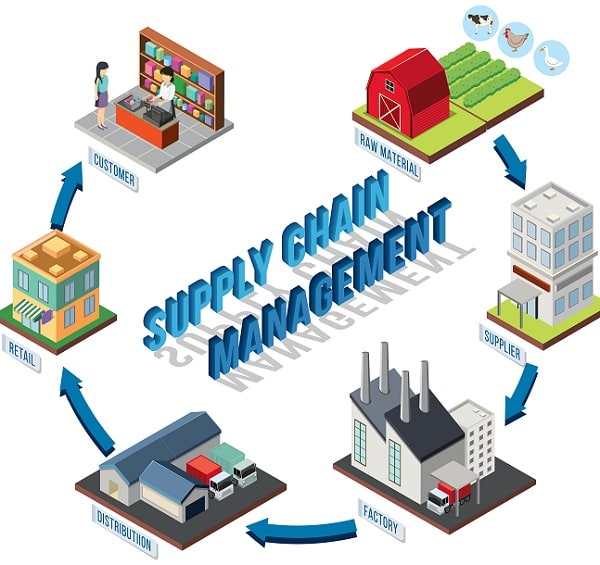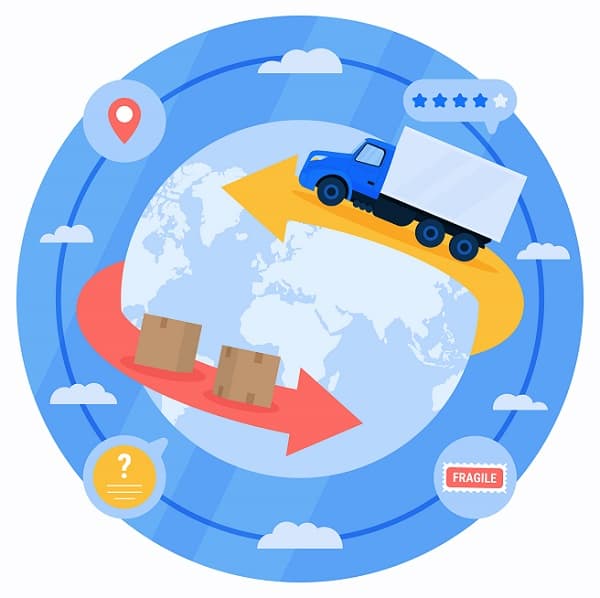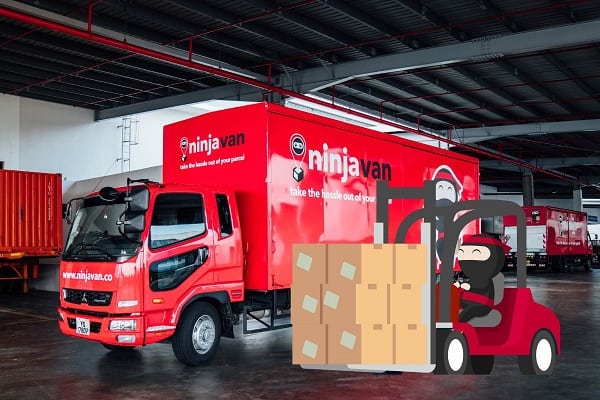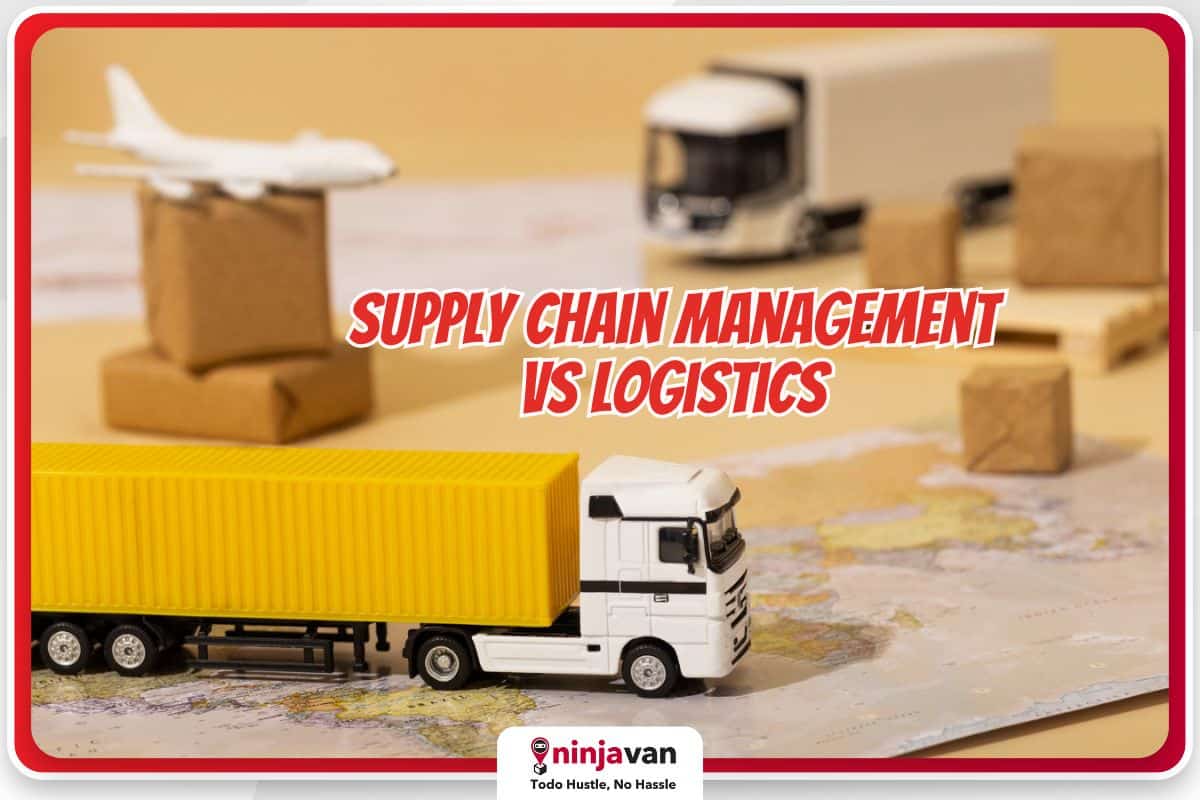Imagine you’re the owner of a growing ecommerce business, or perhaps you run a small to medium-sized enterprise (SME). Suddenly, you receive a surge of orders for your best-selling products. Now, these orders need to navigate through a maze of processes before reaching your customers’ doorsteps.
This intricate journey relies heavily on two key elements: supply chain management and logistics. While these terms might sound intimidating, they’re crucial for ensuring your products reach your customers efficiently.
Let’s explore the difference between supply chain management vs logistics and how each one can help streamline your operations.
What is supply chain logistics?
Supply chain logistics encompasses a series of interconnected activities aimed at efficiently moving products from the point of production to the point of consumption.
Here’s a breakdown of key components involved:
- Procurement: The process of sourcing and acquiring raw materials or finished products from suppliers.
- Transportation: Involves the movement of goods from one location to another, whether by land, sea, air, or a combination of these methods.
- Warehousing: The storage of goods in a designated facility or warehouse until they’re needed for distribution or sale.
- Inventory Management: The systematic tracking, control, and optimization of inventory levels to ensure adequate stock levels while minimizing excess or shortages.
- Distribution: The process of delivering goods to customers or intermediary points of sale through various channels, such as wholesalers, retailers or directly to consumers.
Together, these components work cohesively to streamline the flow of products throughout the supply chain, ultimately ensuring timely delivery and customer satisfaction.
In simpler terms, logistics is about ensuring that the right products are in the right place at the right time, efficiently and cost-effectively.
Also read: Common Inventory Management Problems and Solutions

What is supply chain management?
Supply chain management (SCM) serves as the architect of the entire operation, orchestrating every step from raw materials to the end consumer. Much like a conductor guiding an orchestra, SCM coordinates every aspect to ensure a smooth and synchronized supply chain flow.
Key components of supply chain management include:
- Sourcing: Involves identifying and vetting suppliers for raw materials and components.
- Production planning: It encompasses strategizing production volumes and schedules based on demand forecasts and inventory levels.
- Inventory management: Focuses on fine-tuning stock levels to prevent shortages or surpluses.
- Warehousing and distribution: Entails efficiently storing and transporting goods to fulfill customer orders.
- Returns and after-sales service: This involves facilitating product returns and providing ongoing customer support.
Together, these elements form the backbone of SCM, ensuring products flow smoothly through the supply chain to meet customer demands.
Supply chain management vs logistics: what’s the difference?
So what’s the difference between supply chain management and logistics?
- Logistics handles the movement and storage of goods, but it’s only a piece of the puzzle.
- Supply chain management (SCM) is the bigger picture, covering everything from predicting demand to keeping customers happy.
While logistics deals with the day-to-day tasks of shipping and storing, SCM looks at the whole journey from finding raw materials to delivering final products. So, while logistics focuses on the nuts and bolts, SCM takes a more holistic approach, ensuring every step of the supply chain works together seamlessly to meet customer needs.
Key differences
- Logistics mainly handles the physical movement and storage of goods, while supply chain management deals with a wider range of tasks like sourcing, production, and distribution.
- In terms of focus, logistics aims for efficient transportation and storage, while supply chain management focuses on strategic planning and coordination throughout the entire supply chain.
- When it comes to timeframes, logistics focuses on short-term tasks like delivery schedules, while supply chain management considers long-term factors, such as market trends and future demand.
Common aspects
Despite their differences, logistics and supply chain management work hand in hand to ensure smooth operations. Both aim to optimize processes, reduce costs, and meet customer demands efficiently.
For example, a company may use logistics to streamline its transportation network while employing supply chain management strategies to negotiate better deals with suppliers and improve overall performance.

What is the role of logistics in supply chain management?
Logistics serves as the backbone of moving goods efficiently from suppliers to customers. For businesses involved in e-commerce or retail, logistics plays a critical role in ensuring timely deliveries and customer satisfaction.
For example, Ninja Van’s last-mile delivery services enable businesses to fulfill orders and reach customers in urban and rural areas quickly and reliably. Ninja Van’s extensive network and advanced tracking systems allow businesses to monitor the movement of their shipments in real-time, ensuring transparency and accountability throughout the delivery process.
Meanwhile, warehousing solutions like Ninja Fulfillment provide businesses with efficient inventory management and stock level optimization, minimizing costs related to excess inventory.
Moreover, local businesses can leverage freight forwarding services to transport goods between different regions in the Philippines, especially when sourcing materials or products from multiple suppliers across the country.
Ultimately, logistics is essential for supporting businesses’ supply chain operations, facilitating the smooth movement of goods, and improving overall efficiency and customer satisfaction.
Streamline your supply chain and logistics with Ninja Van
Supply chain management and logistics are like the dynamic duo behind the scenes of your business operations. While supply chain management lays out the big picture strategy, logistics handles the nitty-gritty of getting products from point A to point B.

By blending strategic supply chain management with efficient logistics, businesses can cut costs, boost efficiency, and keep customers happy.
And to do this, partner with Ninja Van, your one-stop logistics solutions provider to streamline your supply chain and logistics, and optimize your business for growth.
Learn about our seamless logistics solution for your business!
More tips to streamline your logistics:
6 Signs You Need to Outsource Your Order Fulfillment
How Less-Than-Truckload Shipping Benefits Small Businesses
How 3PLs Help Your Ecommerce Business Grow







